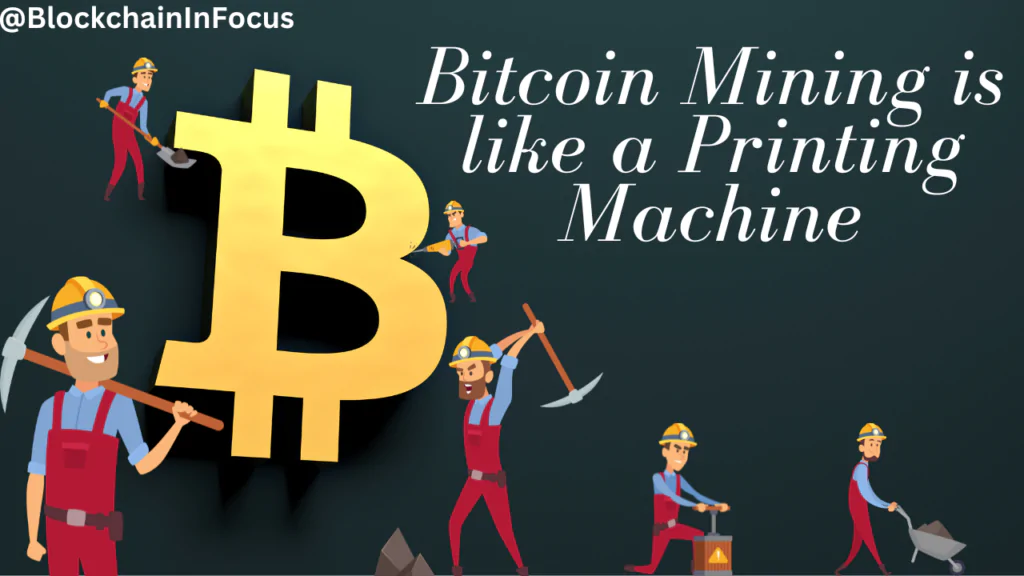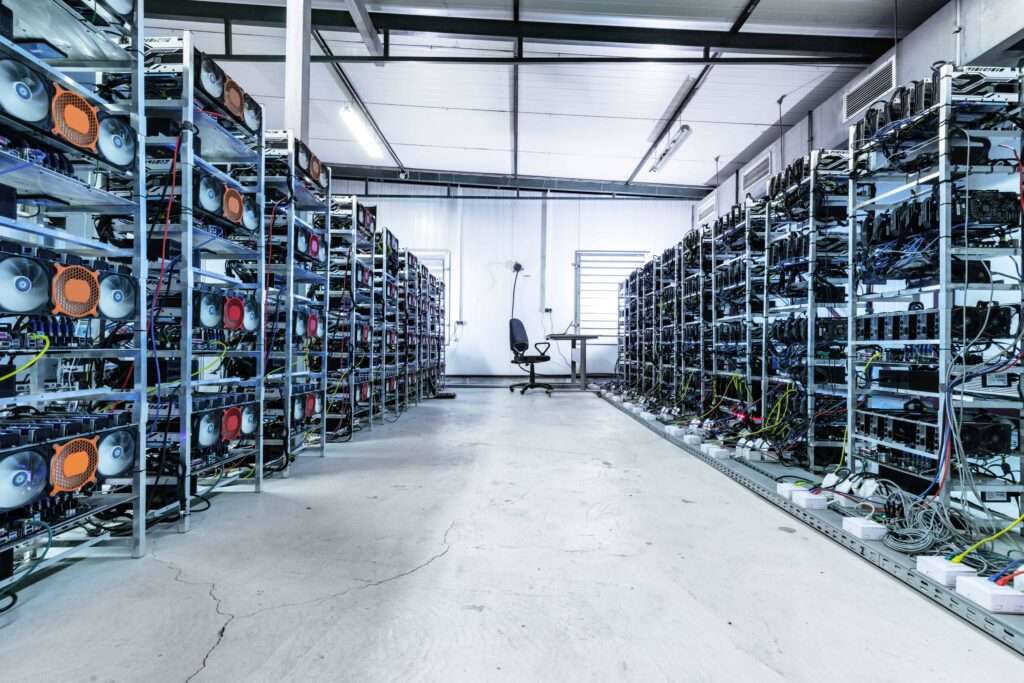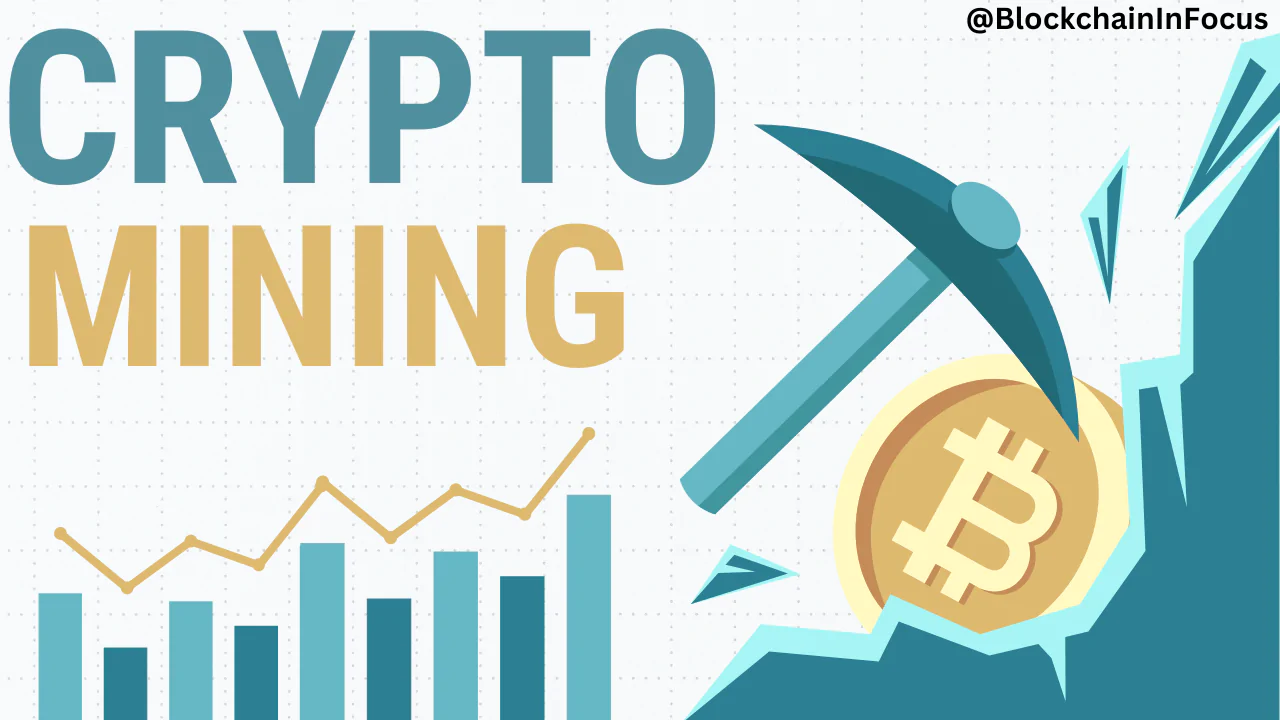Introduction
Cryptocurrency mining has become a lucrative venture for many individuals looking to earn passive income in the digital world. Mining involves validating transactions on a blockchain network and, in return, receiving rewards in the form of newly created cryptocurrencies. Bitcoin Mining is so popular in these day’s you can also mine Bitcoin. In this comprehensive guide, we will delve into the intricacies of cryptocurrency mining, the best mining software, hardware requirements, and the top cryptocurrencies to mine in 2023. So, let’s explore how to dive into the world of cryptocurrency mining and earn rewards.
How to Mine Cryptocurrency Successfully
Mining cryptocurrency involves being part of a decentralized network that verifies and records transactions. As a miner, you can contribute computing power to validate these transactions and, in turn, earn rewards. The process of mining varies depending on the cryptocurrency, but the fundamental principles remain consistent.
To start mining, you need to set up your mining hardware, which can range from GPUs, CPUs, or ASIC miners. Additionally, joining a mining pool can increase your chances of success and regular rewards.
How Does Crypto Mining Work?
Blockchain and Consensus Mechanisms
Cryptocurrencies rely on decentralized networks known as blockchains. These blockchains use consensus mechanisms to agree on the validity of transactions and secure the network. The two most common consensus mechanisms are Proof-of-Work (PoW) and Proof-of-Stake (PoS).
Proof-of-Work (PoW) Mining
PoW is the original and most widely used mining algorithm. Miners compete to solve cryptographic puzzles, and the first one to find the solution gets to add the next block to the blockchain. This process requires substantial computational power and energy.
Proof-of-Stake (PoS) Mining
PoS is an alternative to PoW, where block validators are chosen based on the number of coins they hold and are willing to “stake” as collateral. PoS requires less energy compared to PoW but still ensures the security of the network.
Other Mining Algorithms
Apart from PoW and PoS, various cryptocurrencies use unique mining algorithms, such as Proof-of-Space, Proof-of-Activity, and Delegated Proof-of-Stake.

Getting Started with Crypto Mining
Before diving into mining, there are several essential steps you need to take.
Setting Up a Digital Wallet
A digital wallet is necessary to store the coins you mine. Choose a secure wallet that supports your chosen cryptocurrency.
Choosing the Right Hardware
The hardware you select will significantly impact your mining success. Research and invest in high-quality ASICs or GPUs.
Joining a Mining Pool
Mining pools allow miners to combine their computational power, increasing the chances of earning rewards. Choose a reputable and reliable mining pool.
Installing Mining Software
Mining software connects your hardware to the blockchain network. There are various mining software options available for different cryptocurrencies.
The Mining Process Step-by-Step
Understanding the mining process will help you make informed decisions and optimize your mining setup.
Transaction Verification
Miners validate transactions by confirming their authenticity and accuracy.
Solving Complex Mathematical Puzzles
Mining involves solving intricate mathematical problems, requiring substantial computational power.
Block Creation and Reward
When a miner successfully solves the puzzle, they create a new block and are rewarded with newly minted coins and transaction fees.
Best Bitcoin Mining Software of 2023
When it comes to Bitcoin mining, having the right software can make a significant difference. In 2023, CGMiner, Awesome Miner, EasyMiner, Kryptex Miner, and ECOS stand out as some of the best options. Each software has unique features and benefits, catering to different levels of mining expertise.
CGMiner, being one of the oldest and most flexible mining software, remains popular among experienced miners due to its versatility with various hardware options. On the other hand, Kryptex Miner offers a user-friendly interface, making it an excellent choice for beginners.
How to Mine Ethereum and Other Cryptocurrencies
Apart from Bitcoin, Ethereum and various other cryptocurrencies present profitable mining opportunities. Each cryptocurrency operates on a unique algorithm, requiring specific hardware and software for mining. For example, Ethereum uses Ethash, while Monero relies on RandomX.
Evaluating the requirements and potential rewards of mining different cryptocurrencies can help you choose the most suitable option based on your resources and goals.
Requirements for Successful Crypto Mining
Mining cryptocurrency demands computing hardware capable of performing complex mathematical calculations. Miners often use Application-Specific Integrated Circuit (ASIC) hardware, which can be expensive but significantly boosts mining efficiency.
Moreover, power costs play a crucial role in determining mining profitability. Miners should be aware of their energy consumption and consider locations with lower electricity rates for more lucrative mining operations.
Mining consumes significant amounts of electricity, and electricity costs can greatly impact profitability.
Mining hardware generates heat, so efficient cooling systems are crucial to prevent overheating.
Stable and fast internet connectivity is necessary for smooth mining operations.
Protect your mining setup from potential threats and vulnerabilities to ensure the safety of your earnings.

Top Cryptocurrencies to Mine in 2023
In 2023, certain cryptocurrencies hold greater potential for mining rewards. Among these, Vertcoin, Grin, Monero, ZCash, Ravencoin, and Ethereum Classic stand out as promising options.
Miners must consider factors like market trends, mining difficulty, and potential returns before making their final decision on which cryptocurrency to mine.
Popular Cryptocurrencies for Mining
Not all cryptocurrencies can be mined. Some, like Bitcoin, have a fixed supply, while others, like Ethereum, still rely on mining for block validation.
Bitcoin (BTC) Mining
Bitcoin is the first and most well-known cryptocurrency, and its mining process is intensive due to its high mining difficulty and fixed supply of 21 million coins.
Ethereum (ETH) Mining
Ethereum is a popular platform for decentralized applications (DApps) and uses PoW for now, but it plans to transition to PoS. Ethereum mining is more accessible than Bitcoin mining.
Litecoin (LTC) Mining
Litecoin, often referred to as the silver to Bitcoin’s gold, is similar to Bitcoin but with a faster block generation time and a different hashing algorithm.
Monero (XMR) Mining
Monero is a privacy-focused cryptocurrency that uses the CryptoNight algorithm, providing enhanced anonymity to its users.
Mining Pools: Maximizing Rewards
Joining a mining pool can significantly increase your chances of successfully verifying blocks and receiving regular rewards. Mining pools allow miners to combine their computing power, making the verification process more efficient.
However, miners should carefully choose reputable and secure mining pools to safeguard their investments and earnings.
Overclocking and Underclocking
Tweaking the settings of your mining hardware can enhance its performance.
Monitoring and Maintenance
Regularly monitor your mining operation and perform necessary maintenance to avoid downtime.
Future-Proofing Your Equipment
Cryptocurrency mining is continually evolving, so consider the longevity of your hardware.
Cryptocurrency Mining and Proof-of-Stake (PoS)
With the rising popularity of PoS-based cryptocurrencies, miners must consider how the adoption of this consensus mechanism will impact traditional mining methods. PoS offers an energy-efficient alternative to the resource-intensive PoW (Proof-of-Work) mining.
While PoS mining does not require specialized hardware like ASICs, miners should carefully assess its advantages and disadvantages before committing to mining specific cryptocurrencies.
Cryptocurrency Mining vs. Traditional Mining
Let’s compare cryptocurrency mining with traditional mining practices.
Resource Consumption Comparison
Cryptocurrency mining consumes electricity, while traditional mining consumes raw materials and resources.
Environmental Impact Analysis
The environmental impact of cryptocurrency mining is different from traditional mining’s ecological consequences.
Risks and Challenges in Mining
Mining comes with its share of risks and challenges that you should be aware of.
Volatility and Market Risks
Cryptocurrency prices can be highly volatile, affecting your mining profitability.
Regulatory and Legal Concerns
Mining regulations vary by country, and legal compliance is essential to avoid legal issues.
Environmental Impact
Mining’s energy consumption can have an environmental impact, so consider using renewable energy sources.
Conclusion
Cryptocurrency mining remains a promising avenue for those seeking passive income in the digital world. By understanding the mining process, choosing the right hardware and software, and being part of a reliable mining pool, you can maximize your mining rewards.
Remember to stay updated with the latest trends and adjust your mining strategy accordingly. Happy mining and enjoy the rewards of participating in the exciting world of cryptocurrencies!
FAQs
- Q1: What is the difference between PoW and PoS mining? PoW relies on computational power to validate transactions and create new blocks, while PoS chooses validators based on the coins they hold.
- Q2: Can I mine multiple cryptocurrencies simultaneously? Yes, you can mine different cryptocurrencies simultaneously, but it might require separate mining setups.
- Q3: Is it too late to start mining cryptocurrencies? No, it’s not too late. While the mining landscape is competitive, there are still opportunities for new miners.
- Q4: Can I mine cryptocurrencies without an internet connection? No, an internet connection is essential for mining as it allows your hardware to communicate with the blockchain network.
- Q5: What are the environmental concerns associated with mining? Mining’s energy consumption can put a strain on the environment, primarily if fossil fuels power the electricity used in the process. Transitioning to renewable energy sources can mitigate this impact.
Read more – Top 10 Blockchain Startup Ideas 2023: Exploring Profitable Opportunities in the Web3 Era
Read more – Blockchain Developer Roadmap 2023 : A Step-by-Step Guide











Mining is way to be rich